Last Updated on June 1, 2022
Maybe you are just now hearing about a serger sewing machine. But this word is bound to come up if you hang out with other sewers. In this article we will give you a rundown of what a serger sewing machine is, its types, and explain what each of them do. This way, you can decide whether you need one.
What is a Serger Sewing Machine and How Does It Work
Basically, a serger is a sewing machine that utilizes multiple threads to seam fabric, simultaneously overcasting to cover raw edges. A serger is an excellent way to make the edge of your seam look clean.
The density and width of the stitching are two primary variables you should consider when using a serger. But, take note that not all serger sewing machines have the same options. Just like any other machine you buy, the higher the price, the more options it has.
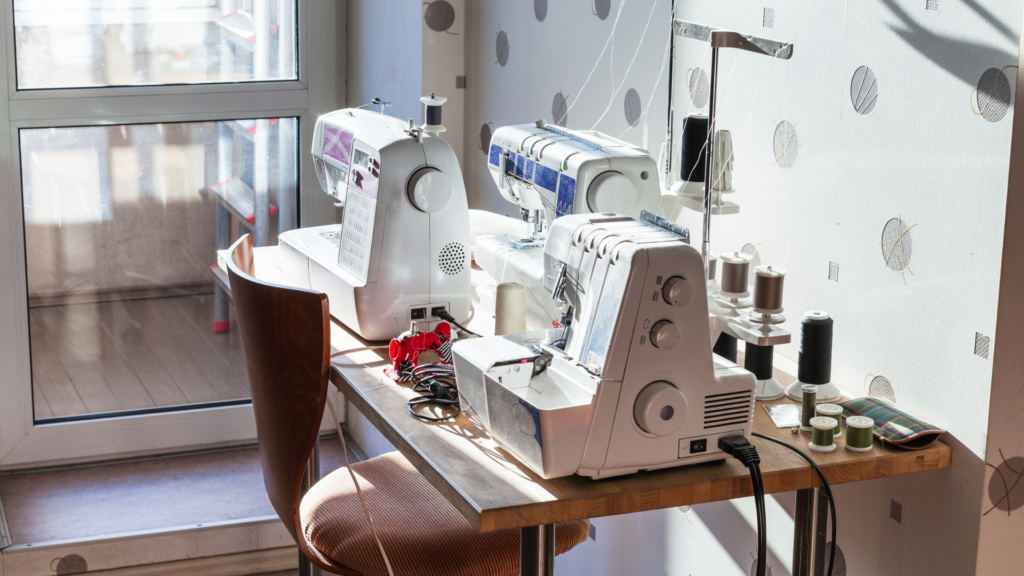
2-3-4 or 5 Thread Serging
You can buy sergers depending on the thread use option you need. How many threads you use on the serger also determines the results you aim to get as they produce different stitches and results.
- 2-4 Thread Serger – This serger sewing machine can produce a true safety stitch as well as a two-thread overlocked edge. On each operation, you can utilize two threads and use the serger to make each stitch individually.
- 3-4 Thread Serger – As its name suggests, this serger sewing machine works with three or four threads. Whether you use three or four threads, a seam with stretch capabilities will be produced. A four-thread seam, on the other hand, creates a wider and more durable seam. Most 3-4 thread sergers also come with a rolled hem feature when you change their throat plate. To make a rolled hem, the serger rolls the fabric’s edge to the underside and encloses it with thread. Sometimes, the four-thread seam is called a “mock safety” stitch as it makes the seam stronger using a separate seam or a safety stitch.
- 5 Thread Serger – This serger sewing machine is quite expensive, but it comes with all the seam features you need. Two threads are used to create the straight seam line, while three are used on the overlocked edge. Ready-made items with an overlocked edge along with chain stitched straight seam usually have this seam. This sewing machine removes the need to stitch between machines, creating a strong seam and finish during production work.
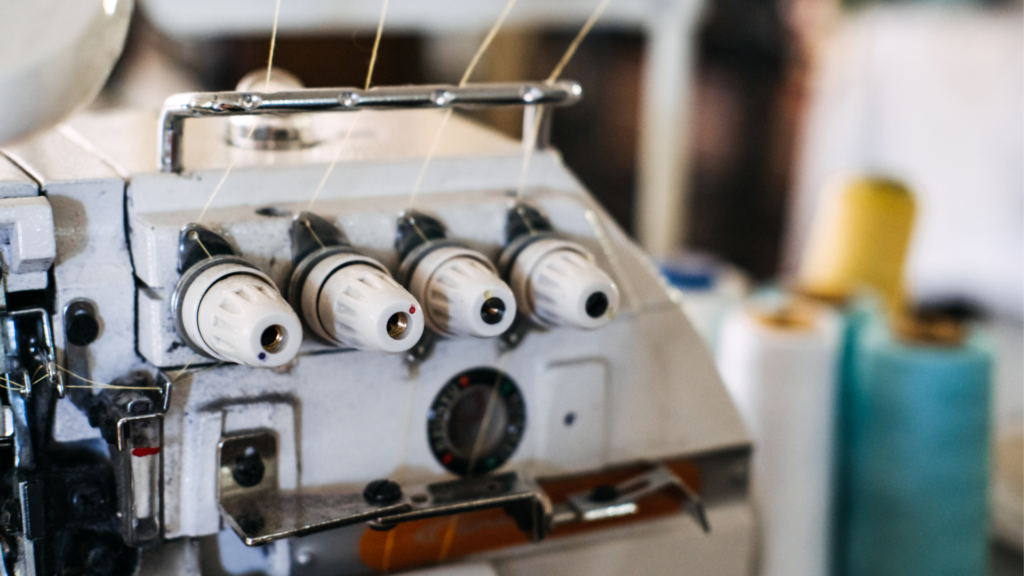
Do I Need A Serger For Garment Sewing?
Since a serger sewing machine creates a beautiful, clean edge on any seam, you can tell that it is a must-have item for those who love sewing. Its cutting blade trims the edge of the fabric while wrapping it with the upper and lower looper threads. As a result, it excellently protects or secures the fabric’s edge.
Another possible reason why you need a serger is construction. It can be your go-to sewing machine for your knit projects, as you can hem knit garments using the cover stitch.
Hemming and finishing seams can add a professional look inside and outside any garment. A serger also works for woven fabrics that are utilized in a garment. For these kinds of projects, you can usually use a 5 or 4 thread stitch.
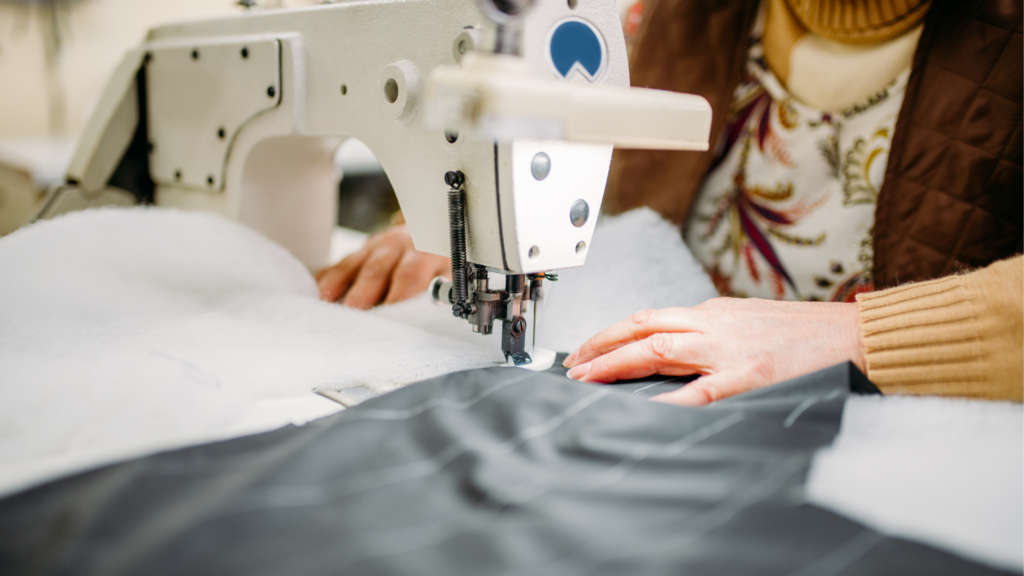
Can A Serger Handle Fabrics Like Wovens, Knits, Sequins, Or Lace?
The short answer is yes. Sergers are intended for handling different types of fabric, such as lightweight to heavy ones, non-woven or woven fabrics, and textured and vinyl fabrics.
However, it is best to match the stitch you use to the type of fabric you are working on. For instance:
- Silk – When using silk, utilize a three-thread stitch instead of a four-thread stitch, then finish the fabric edge. Since silk is a lightweight material, a four-thread stitch can be too heavy for seam finish and construction.
- Knits – It is ideal to use a stretch needle than a regular overlock needle when working with knits. Also, make sure to test the type of stitch with the needle you will use, including the thread on the fabric before stitching.
Types Of Finishes You Can Do On A Serger
Overlock Stitch
With a serger sewing machine, you can make an overlock stitch on your fabric. This stitch has at least one needle thread along with a lower and upper looper thread. While forming the stitch, the lower and upper looper threads are carried to the needle, similar to a back and forth movement.
These looper threads are secured by the needle when the needle pierces through the fabric. The lower and upper looper threads cross or lock at the edge of the fabric, called locking.
As a result, the upper looper thread positions on top while the lower looper thread is on the bottom, locking at the edge of the fabric and the needle.
Wave Stitch
You can only achieve this type of finish using Baby Lock sergers. The wave stitch is a decorative stitch that includes a needle thread and lower and upper looper thread.
A standard overlock thread is utilized in the needle and a decorative thread for the lower and upper loppers. As its name suggests, a wave-like stitch is created by adjusting the upper looper’s thread path.
The stitch’s underside looks similar to a standard serger stitch. Meanwhile, you can choose from different wave stitch variations such as the flatlock wave, reverse wave, and the rolled wave.
Chain Stitch
The chain stitch consists of a chain looper thread and a needle thread. When you look at the top of the stitch, it appears similar to a straight stitch, while the underside looks like a flat loop, pretty much like what is used on sacks of sugar, flour, or dog food.
Imagine how you open a sack of rice. The chain stitch also pulls apart when you find the right stitch. Woven pants like jeans usually feature this type of finish too.
What Are The Type Of Garments You Can Sew On A Serger Sewing Machine?
You can pretty much sew any type of garment you want on a serger sewing machine. Start on garments that come with simple design lines, then move to more challenging garments. Some of the garments you can sew on a serger are dresses, pants, knit, and coats.
Should I Replace My Regular Sewing Machine With A Serger Sewing Machine?
You might completely do some projects on a serger, but it cannot replace a regular sewing machine. A regular sewing machine will allow you to work on zippers, facings, buttonholes, topstitching, and more. Meanwhile, a serger sewing machine can’t do any of these tasks.
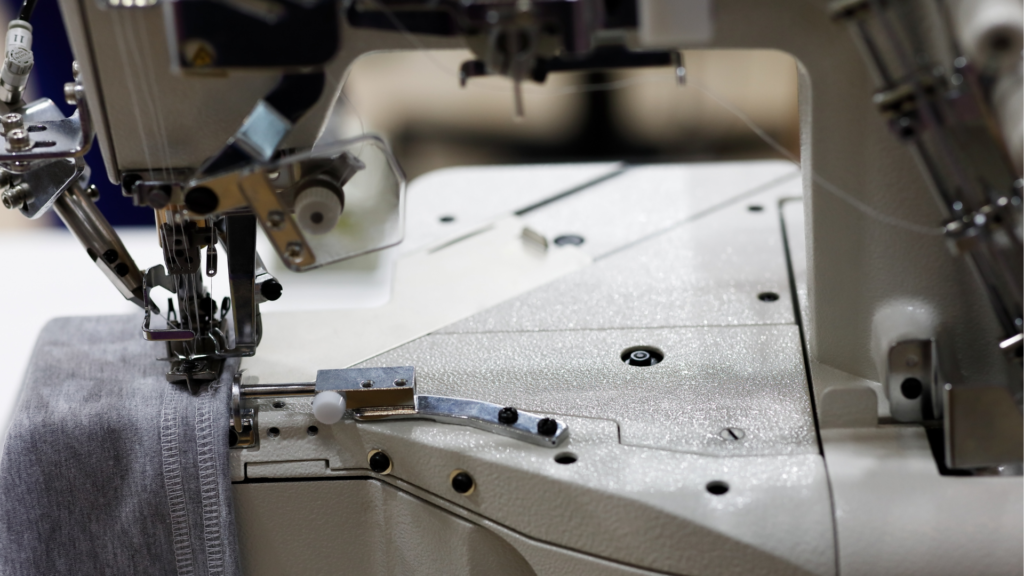
Some Final Words
Overall, a serger sewing machine is excellent equipment to have when working on different garments. It helps to add a clean look to the seams of fabric by covering the edges with multiple threads. If you want to make your garments look professional and durable, it is the best time to explore serger sewing machines.

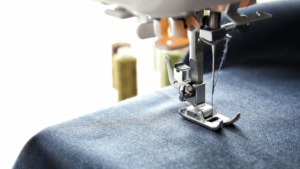
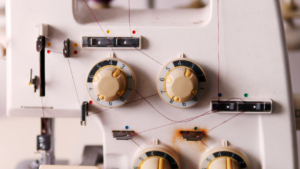
![Read more about the article How To Thread A Sewing Machine Needle Easily [2023]](https://www.sewkitkit.com/wp-content/uploads/2021/09/threading-a-needle-2-300x169.png)
![Read more about the article Types of Sewing Machine Threads: Everything You Need to Know [Part 1]](https://www.sewkitkit.com/wp-content/uploads/2021/08/thread-c-300x169.png)
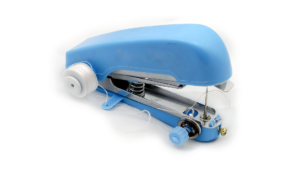
![Read more about the article 32 Sewing Terms Every Beginner’s Must Know [Guide]](https://www.sewkitkit.com/wp-content/uploads/2018/03/sewing-machine-101-300x200.jpg)